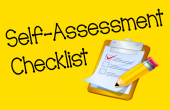3 Tips For Handling The Paper Tax Return Submission
Article Author: Amanda Swales Posted on: November 11, 2019 (Full Author Bio in the box on the right side) 2047 views
2047 views

If you’re new to submitting Self Assessment tax returns, it pays to know that there are three ways of filing. Firstly, you can submit via the HMRC site and receive instant acknowledgement post-submission. You can also use commercial software to do this for you. Or, you can send a paper tax return to HMRC in the post.
Whichever method you choose, it’s important to understand your exact responsibility. For those who are self-employed or let out UK property, paper submissions can be complicated as they involve additional forms and documentation.
With the 31st October paper return deadline fast approaching, we thought it would be useful to invite Mike Parkes from GoSimpleTax to explain how best to prepare for the Self Assessment tax return submission and file with confidence.
1. Be conscious of the deadline
Should you choose to file a paper tax return, don’t forget to file before the 31st October deadline. Failure to do so will see you start being charged penalties from the 1st November. We would recommend sending your paper submission prior to the October deadline, either through recorded delivery or with some proof of posting in order to prove your compliance.
You have longer to submit online tax returns. The deadline is the 31st of January, and you will be charged penalties from the 1st February for any late submissions.
2. Organise supplementary pages
Remember, it isn’t enough to submit the main SA100 tax return. You need to bundle it together with the rest of your documentation that references your property or self-employment income.
For any income as a landlord, all that’s required is to file an additional form (SA105) and submit it alongside your regular Self Assessment tax return.
However, with self-employment, the additional sections required of you could be either the SA103S or the SA103F. The difference between the two is that the former is for those who had an annual turnover below the VAT threshold for the tax year (£85,000 as of 2019/20), and the latter is for those who earn above the VAT threshold.
3. Be open to online
While you may have historically always submitted your tax return by paper, the vast majority of tax returns are now submitted online. Last year saw only 700,000 paper submissions, for example. Improvements in technology and the extra three months to file are the main incentives to submit an online tax return.
Having an online account with HMRC allows you to not only extend your filing deadline but also check your details at any time to see how much tax is due and act accordingly.
If you’re happy to tweak the way in which you keep your records and adopt digital record-keeping, this will help minimise admin further, as well as enable you to submit your tax returns and automatically calculate your tax.
Latest Posts
-

Staying HMRC Compliant: VAT Returns Have Chan...
by Amanda Swales on January 29, 2020 Accounting & Tax -

Self Assessment Tax Return 101 - Filling In T...
by Amanda Swales on January 15, 2020 Accounting & Tax -

-



 5 reasons to update your self-assessment throughout the year
5 reasons to update your self-assessment throughout the year  Beginners guide to business tax deduction
Beginners guide to business tax deduction  Are You Declaring All Of Your Earnings To HMRC?
Are You Declaring All Of Your Earnings To HMRC?  Deadline day penalties: a subjective approach
Deadline day penalties: a subjective approach  Self Assessment Tax Return 101 - Filling In The Form Fast
Self Assessment Tax Return 101 - Filling In The Form Fast  What is a second payment on account and how is it calculated?
What is a second payment on account and how is it calculated?  Corporation Tax: Late Payment penalties and interest charges explained
Corporation Tax: Late Payment penalties and interest charges explained  3 Tips For Handling The Paper Tax Return Submission
3 Tips For Handling The Paper Tax Return Submission  Top 3 Reasons Why Freelancers and Contractors should hire an Accountant
Top 3 Reasons Why Freelancers and Contractors should hire an Accountant  Do I Need To Register As A Self-Employed Sole Trader?
Do I Need To Register As A Self-Employed Sole Trader?  Top Tax Tips for UK Contractors and Freelancers
Top Tax Tips for UK Contractors and Freelancers  Key tax dates coming up in July
Key tax dates coming up in July  Top Tax Changes That Contractors Need To Know
Top Tax Changes That Contractors Need To Know  How long to keep your PAYE records
How long to keep your PAYE records  Should an IT contractor become VAT registered
Should an IT contractor become VAT registered  Staying HMRC Compliant: VAT Returns Have Changed
Staying HMRC Compliant: VAT Returns Have Changed  A Guide To Tax Changes Impacting Landlords
A Guide To Tax Changes Impacting Landlords  The top 6 most common mistakes made on Self Assessment Tax Returns
The top 6 most common mistakes made on Self Assessment Tax Returns  Cloud Accountancy for Contractors: Do you find it mystifying?
Cloud Accountancy for Contractors: Do you find it mystifying?  HMRC Taskforces Targeting VAT Fraud
HMRC Taskforces Targeting VAT Fraud  Scotland Vs England And Wales: What Are The Differences In Tax?
Scotland Vs England And Wales: What Are The Differences In Tax?  IT Contractors - Profit extraction by dividend payment
IT Contractors - Profit extraction by dividend payment  Self Assessment Payments on Account
Self Assessment Payments on Account  Choosing the right VAT route
Choosing the right VAT route  How To Make The 2019-20 Tax Year The Time Of Tax Savings As A Sole Trader
How To Make The 2019-20 Tax Year The Time Of Tax Savings As A Sole Trader  The Tax Investigation Process
The Tax Investigation Process  Are you aware about the new HMRC Your 2016 Tax Report Phishing Scam?
Are you aware about the new HMRC Your 2016 Tax Report Phishing Scam?  Review bid gets crucial boost from influential and campaigning politician
Review bid gets crucial boost from influential and campaigning politician  PAYE Week 53 payments HMRC
PAYE Week 53 payments HMRC  Who Needs A UTR Number Anyway?
Who Needs A UTR Number Anyway? 

